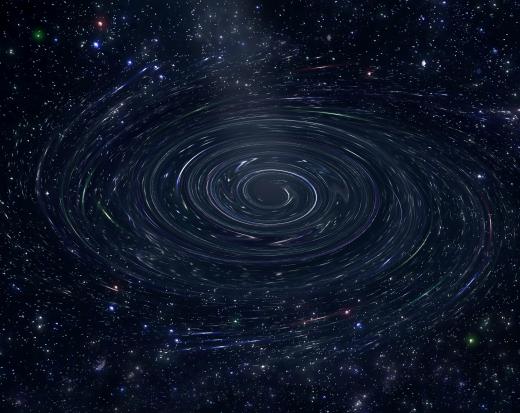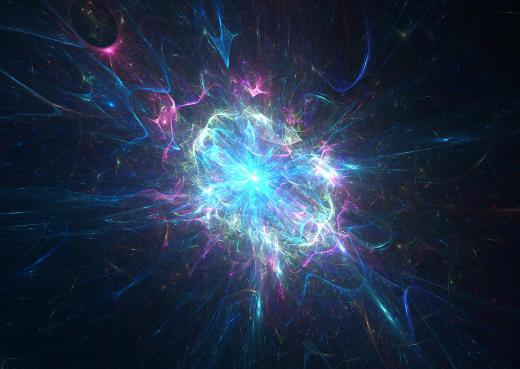What is Stellar Evolution?
 Mary McMahon
Mary McMahon
Stellar evolution describes the process in which stars form, burn for an extended period of time, and eventually die. Along the way, the star struggles with gravity and fuel consumption in an attempt to maintain equilibrium. Much of stellar evolution is theory, since humans have not been around long enough to observe the entire life cycle of a single star, but thanks to the ample numbers of stars at various stages scattered around the universe, it has been possible to make educated and intelligent guesses about how stars evolve over time, and the process appears to be relatively predictable.
The process of stellar evolution starts with the formation of a star. Stars form in what are known as “giant molecular clouds,” swirling masses of gases and particles. Over time, these clouds undergo gravitational collapse, generating protostars, celestial bodies which have the potential to become stars. The type of star that a protostar will evolve into depends on its chemical composition. As the star gradually pulls together, a series of nuclear reactions start to occur, causing the star to gain luminosity.

Eventually, a star will consume its fuel, typically collapsing and setting off another chain reaction of events which cause the star to burn extremely hot and bright. Depending on the type of star, it can turn into a white dwarf, a neutron star, or a black hole when it dies, often preceding this event with a fantastic supernova, caused by a runaway chain reaction. Stellar evolution is constantly occurring all over the universe as stars come and go.

Each stage of a star's life can be plotted on a chart such as the Hertzsprung-Russel Diagram. The chart compares the star's color, size, luminosity, and temperature. Stars of a certain class tend to lump together on such diagrams, demonstrating clear relationships between specific types of stars which can be used to learn more about stars in general. Using such a chart, scientists can take observations about various stars and convert them into distance from Earth and other useful data about stellar evolution.

Many stars fall into a classification known as the main sequence, referring to a signature cluster of stars which can be seen on many plots used to chart stars by characteristic. The Sun is an example of a main sequence star, and it will remain stable for at least five billion more years, according to most estimates. At the end of the main sequence period, the sun will convert into a red giant, expanding considerably as it uses up its fuel and engulfing several planets, including Earth, along the way.
AS FEATURED ON:
AS FEATURED ON:













Discussion Comments
I've always found it astonishing that we know one day our own sun become a red giant star, and then eventually will burn out. We know humanity can't last forever (assuming we never colonize another solar system, of course).
I wonder what it was like for the first person who realized that one day our own sun would burn out and life on earth would likely all perish.
I guess even the religious don't think the world will last forever, so it might not have been that much of a shock.
Still it's billions of years away and goodness knows we probably won't be around to see it anyway. At least, not in the form we take at the moment.
I really admire the way that humans are able to infer what will happen in processes like the evolution of stars, even though there's no way for us to observe how it would actually occur.
When you think about the distances involved and the fact that only 200 years ago we barely understood what the stars were, it's astonishing how much they can prove these days.
I remember when I was a kid I couldn't understand why the periodic table was so organized. They only made us memorize the numbers and explained what they were for, but they didn't explain how elements were formed.
My teacher didn't really understand when I asked about it, but luckily my father knew what I meant and explained about how atoms were fused in the hearts of stars and the number of atoms was what made the different elements.
The fact that a random person can just know that about something so far away even the light takes thousands or millions of years to reach him is truly wonderful.
Post your comments